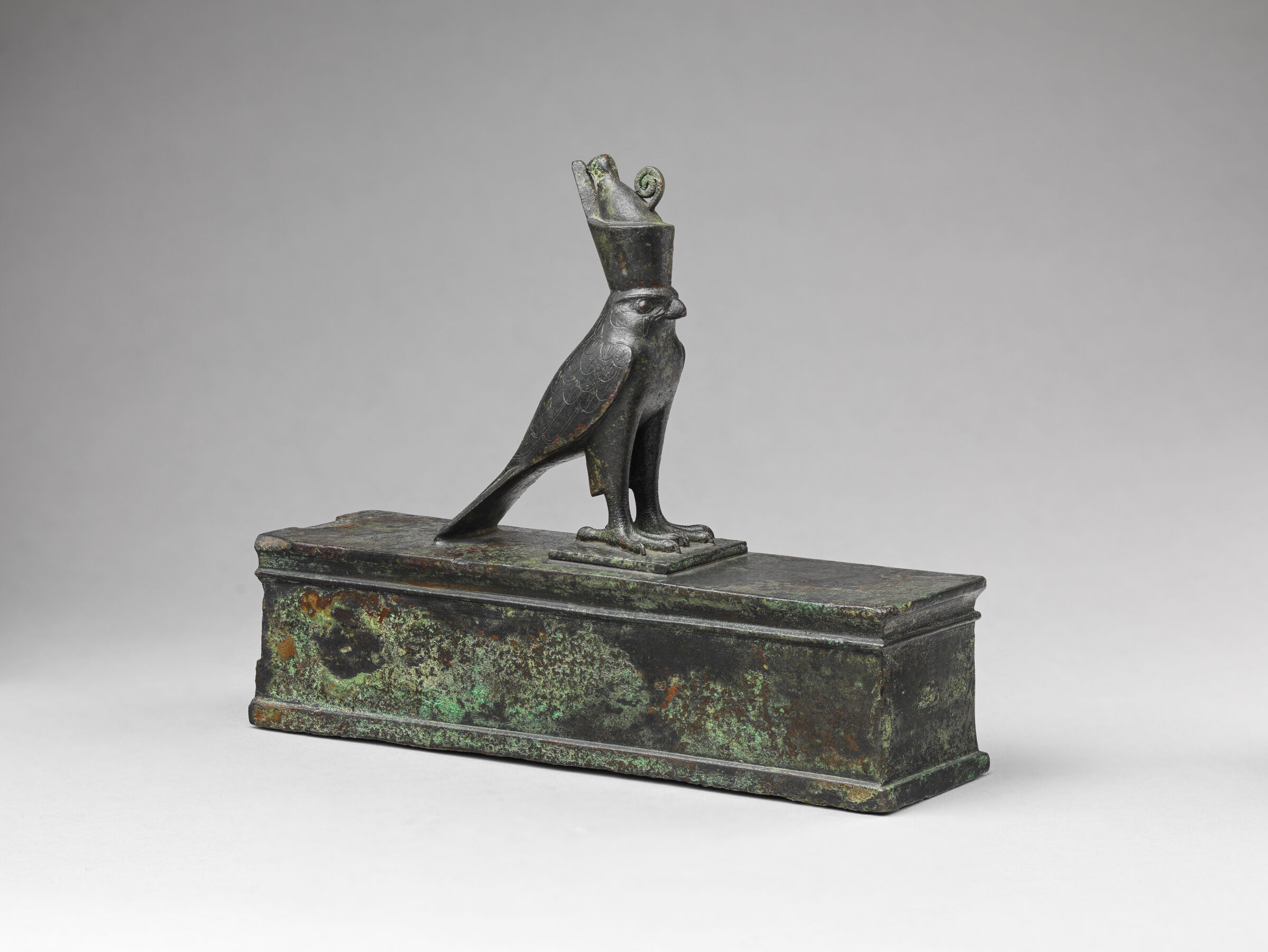Falcon Casket by iuegypt on Sketchfab.
In the 1st millennium, animal cults became increasingly popular. The ancient Egyptians worshiped certain animals as the embodiments of a god’s power on earth. Falcons represented the god Horus and his various cultic forms. Falcons were bred at sites such as the sacred animal necropolises at Saqqara and Abusir.1 Pilgrims could purchase ritually sacrificed and mummified falcons contained within metal coffins to present as offerings to the cults of Horus.2
Horus rests on a rectangular box as a shrine with cornice molding. The god wears a double crown of Upper and Lower Egypt, with the curling element of the lower Egyptian crown intact. The feathering and the rough skin of the falcon’s talons are carefully incised. The fierce expression of the raptor is rendered with unusual intensity. The panel at the rear end of the shrine could be removed to place the mummified falcon inside the casket.
MH
-
Davies, Sue and H.S. Smith. 2005. The Sacred Animal Necropolis at North Saqqara: The Falcon Complex and Catacomb, The Archaeological Report. EES Excavation Memoir 73. London: Egypt Exploration Society, 2005.. ↩︎
-
Davies, Sue and H.S. Smith. 2005. The Sacred Animal Necropolis at North Saqqara: The Falcon Complex and Catacomb, The Archaeological Report. EES Excavation Memoir 73. London: Egypt Exploration Society, 2005.. See similar coffin, FCO-146, pls. XXXVIIa–c, fig. 26, EMC JE 91456. ↩︎
Bibliography
- Davies and Smith 2005
- Davies, Sue and H.S. Smith. 2005. The Sacred Animal Necropolis at North Saqqara: The Falcon Complex and Catacomb, The Archaeological Report. EES Excavation Memoir 73. London: Egypt Exploration Society, 2005.
